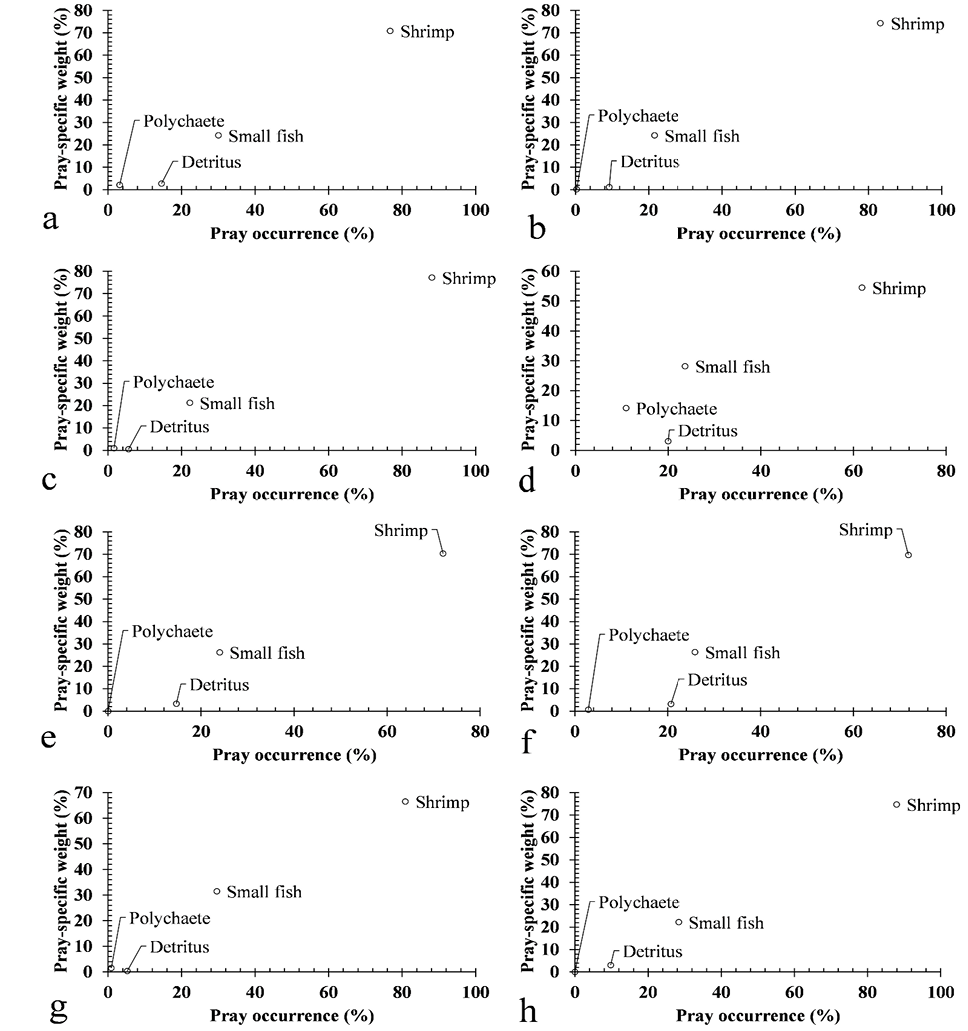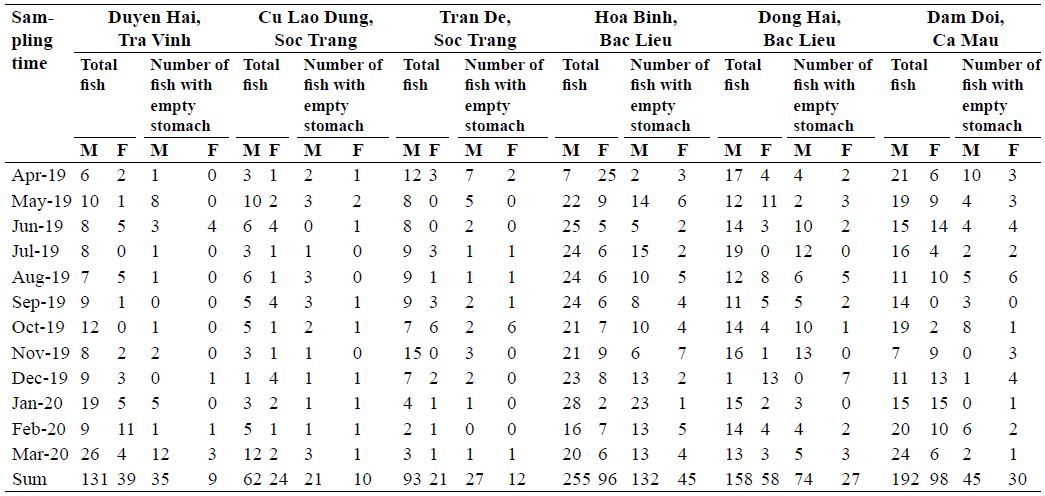Diet Composition and Feeding Strategy of Butis koilomatodon Inhabiting the Estuarine Regions in the Mekong Delta, Vietnam
Diet Composition and Feeding Strategy of Butis koilomatodon Inhabiting the Estuarine Regions in the Mekong Delta, Vietnam
Quang Minh Dinh1*, Tran Thi Huyen Lam2,3, Y Thi Nha Nguyen4, Thanh Minh Nguyen1 and Tien Thi Kieu Nguyen5
The sampling map in the Mekong Delta (•: Sampling area; 1: Duyen Hai, Tra Vinh, 2: Cu Lao Dung, Soc Trang, 3: Tran De, Soc Trang, 4: Hoa Binh, Bac Lieu, 5: Dong Hai, Bac Lieu, and 6: Dam Doi, Ca Mau).
The modified Costello graphics represent feeding strategy based on plotting the relationship between the percentage of weight and frequency of occurrence of food items for Butis koilomatodon in two seasons; a: dry season, n=413; b: wet season, n=347) and at six sites; c: Duyen Hai, Tra Vinh, n=126; d: Cu Lao Dung, Soc Trang, n=55; e: Tran De, Soc Trang, n=75; f: Hoa Binh, Bac Lieu, n=174; g: Dong Hai, Bac Lieu, n=115; h: Dam Doi, Ca Mau, n=215).
Number of Butis koilomatodon collected from six studied sites.
M, males and F, females.













